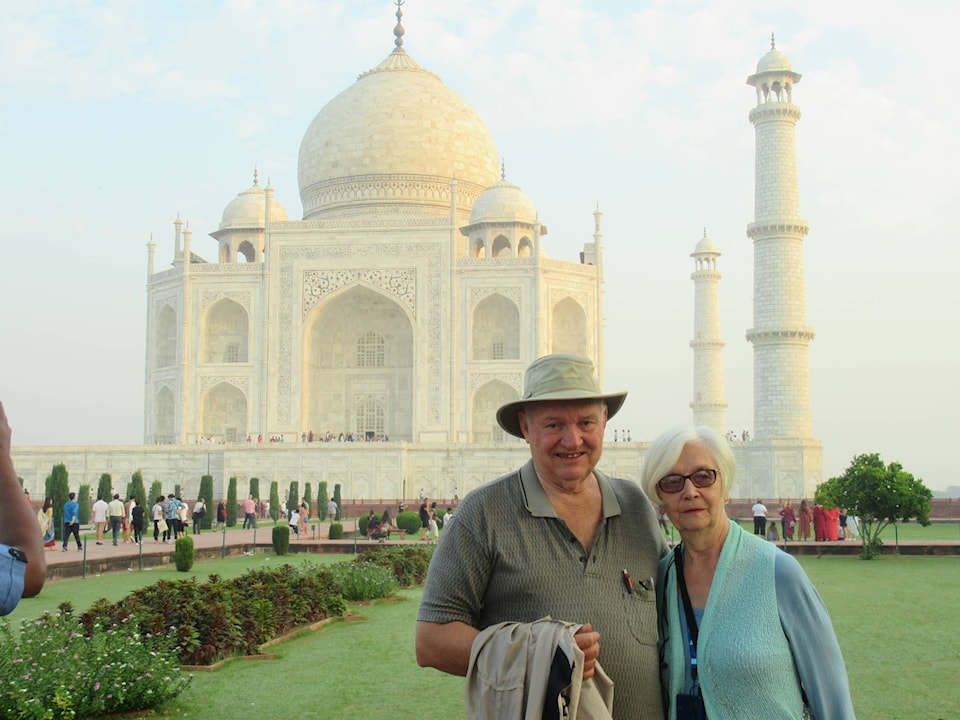A Passage to India is the name of a novel published by British writer E.M. Forster in 1924. It deals with an India of an earlier time, although some of that earlier time still lingers on in parts of India that my wife and I recently toured.
Our passage to India began with a 13-hour plane ride from Vancouver to Delhi in north-central India. It continued with a hired car from the Delhi airport to the luxurious Oberoi Hotel. The hired car at best accommodated five people (we were six), so on our first passage within India, we crammed into the vehicle and sat upon one another.
The way our driver wove in and out of traffic and passed vehicles by merely inches on our way to our hotel frightened all of us.
That was the start, but many of the tour trips throughout Delhi and Agra and Jaipur and Kolkata were similar. We always seemed to be darting in and out of traffic and slipping into lanes where there was no space. I don’t know why we didn’t crash into other vehicles or why other vehicles didn’t slam into us.
On this India passage, we traveled by hired car, taxi, bicycle-rickshaw, motorized rickshaw, small bus, tour bus, and small cruise ship on the Ganges. Beyond that, we traveled on our feet, following guides who told us everything. If a particular Moghal emperor scratched his nose, we learned about it.
Our passage to India took us to several religious sites such as the Muslim Jama Masjid mosque and the Sikh gold and white Bangla Sahib temple. We visited a Muslim area that had a tall sandstone minaret (Qutub Minar) 72 metres high that was begun in 1199.
Our passage to India carried us to places where the highlights were often tombstones of famous people. We visited the garden tomb area of Emperor Humayun in Delhi. We spent time in Agra at the Taj Mahal, where we visited the tomb of Queen Mumtaz Mahal, beloved wife of Shah Jahan. He built the Taj Mahal beginning in 1632 upon the death of Mumtaz. Later, we also stood by the tomb of Mother Theresa housed in her Charity Centre in Kolkata.
Our passage to India took us to several ancient forts such as the magnificent Red Fort in Agra built from sandstone with white marble inner courts. It was famous because one of the sons of Emperor Shah Jahan imprisoned him there because the son wanted sole rulership of the Agra domain.
Another impressive fort we visited in Jaipur was the Amber Fort. It was built on a mountainside, and high walls like the Great Walls of China stretched away from it and up and over nearby mountains. The passage to this site was in jeeps over terribly rough roads — ever upward.
Our passage to India took us to several restaurants that were ordinary in some ways and yet had distinctive Indian food. Spice was the order of the day, and we managed to eat all sorts of dishes with various levels of spices.
Many times we ate in the hotels where we stayed. But we also ate in “outside” restaurants with names such as Wok in the Clouds, Plum Chair, Lazees Affaire, and A Pinch of Spice. Outside the Lazees Affaire restaurant, we watched a snake charmer musically induce snakes to rise from bamboo pots.
Our passage to India took us to several small villages up the Ganges River from Kolkata. These villages had a lifestyle that dipped into the past. One afternoon we went to the village of Guptipara by electric rickshaw and visited several small industries.
Here the children were fantastic. Some told us their names, and one girl sang us a song from India’s most famous poet, Rabindranath Tagore. The children followed us all over the village as we visited an idol and effigy shop creating figures for celebrations.
The children showed up again when we visited a pottery complex with all the local clay pots displayed outside on the street. The children wanted to say hi to us, they wanted to touch our hands, and they wanted to be in our presence as long as possible. It was a most amazing experience and capped off India beautifully.
